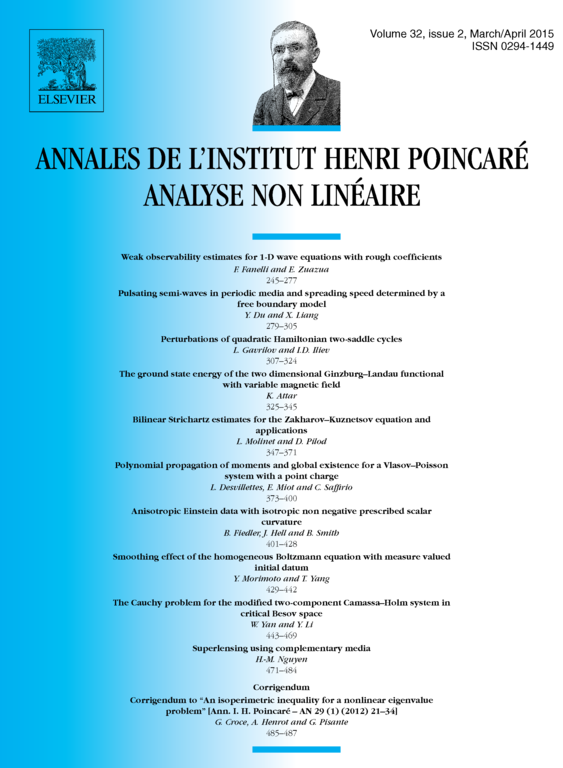Smoothing effect of the homogeneous Boltzmann equation with measure valued initial datum
Yoshinori Morimoto
Graduate School of Human and Environmental Studies, Kyoto University, Kyoto, 606-8501, JapanTong Yang
Department of Mathematics, City University of Hong Kong, Hong Kong, PR China

Abstract
We justify the smoothing effect for measure valued solutions to the space homogeneous Boltzmann equation of Maxwellian type cross sections. This is the first rigorous proof of the smoothing effect for any measure valued initial data except the single Dirac mass, which gives the optimal description on the regularity of solutions for positive time, caused by the singularity in the cross section. The main new ingredient in the proof is the introduction of a time degenerate coercivity estimate by using the microlocal analysis.
Résumé
Nous justifions l'effet régularisant pour les solutions à valeurs mesures de l'équation de Boltzmann spatialement homogène dans le cas des molécules maxwelliennes. Il s'agit de la première preuve rigoureuse de l'effet régularisant pour toutes données initiales à valeurs mesures sauf la masse de Dirac seule, ce qui donne la description optimale de la regularité des solutions en temps positif à causée par la singularité dans le noyau de collision. Le principal ingrédient nouveau dans la preuve est l'introduction d'unc inégalité de coercivité dégénérée par rapport au temps en utilisant l'analyse microlocale.
Highlights
-
We discuss the Boltzmann equation with the angular singularity in the cross section.
-
The spatially homogeneous Cauchy problem is considered in the Maxwellian case.
-
The smoothing effect occurs for measures initial data except for a single Dirac mass.
-
The coercivity of the collision operator is derived from the angular singularity.
-
The time degenerate coercivity is available for the initial datum, two Dirac masses.
Cite this article
Yoshinori Morimoto, Tong Yang, Smoothing effect of the homogeneous Boltzmann equation with measure valued initial datum. Ann. Inst. H. Poincaré Anal. Non Linéaire 32 (2015), no. 2, pp. 429–442
DOI 10.1016/J.ANIHPC.2013.12.004